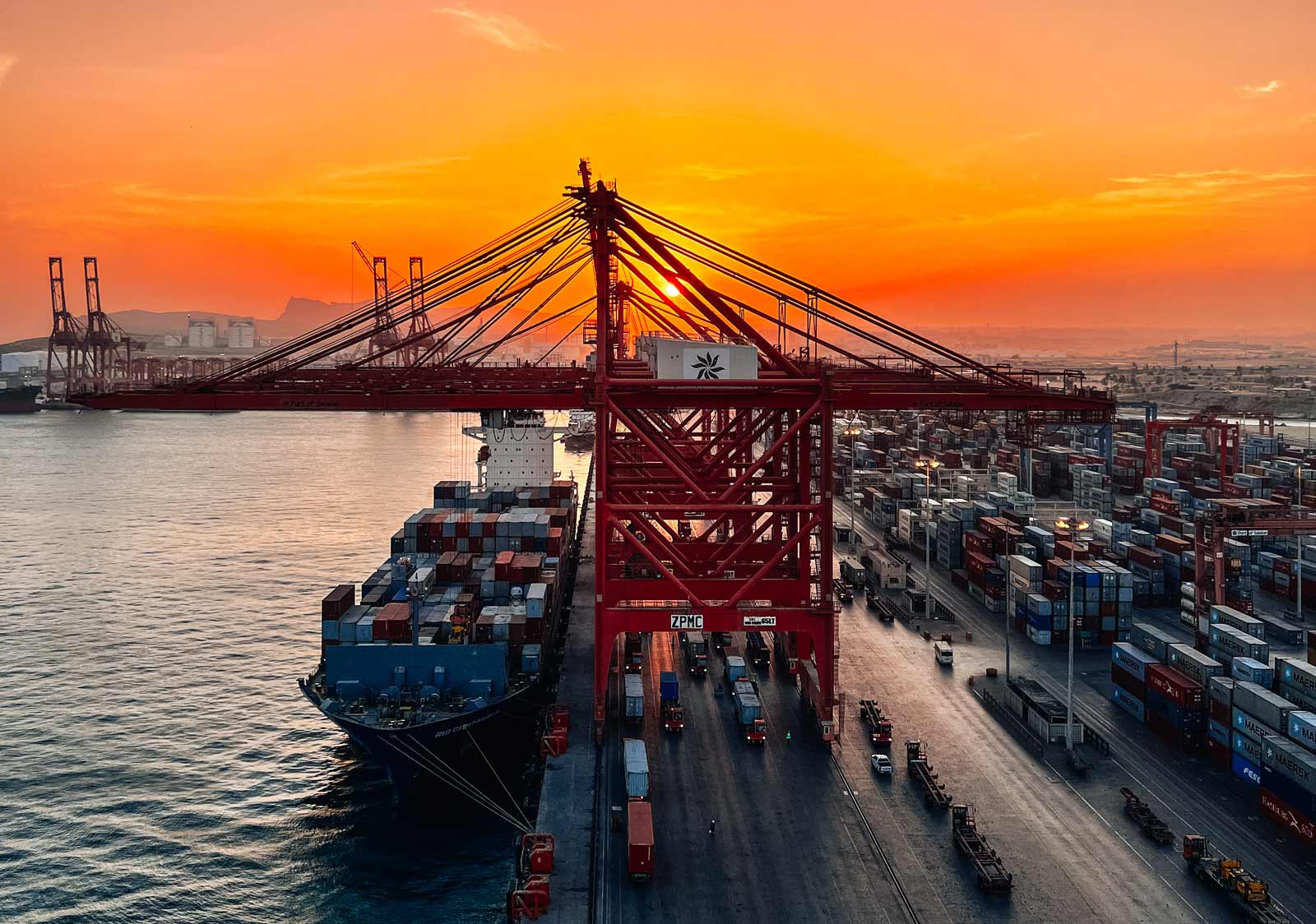
Red Sea Shipping Alternatives
The Port of Salalah's two multi-modal services avoid the higher risk area of the red sea and provide a viable alternative to the time consuming and more costly re-routing around the Cape of Good Hope. They offer Beneficial Cargo Owners (BCOs) and Shipping Lines cost-effective and fast alternatives between Asia the United States East Coast and European destinations.
The Port of Salalah is ideally located on the main ocean routes connecting South and East Asia with Europe, North Africa and the Americas, and the upper Gulf with East Africa. Unlike other popular transshipment ports in the region, no detour from the main East-West shipping routes into the Gulf of Oman is required, saving a 4-5 day detour from main east-west shipping routes.

Overland between Salalah and Jeddah
From the Port of Salalah, an in transit overland route by truck connects to Jeddah located in the safer mid-point of the Red Sea in Saudi Arabia. The overland route takes approximately 4-5 days. From this point the journey can continue by container vessel through the Suez Canal to Europe or the US East Coast reducing the overall transit time under to current routing.
Sea/Air Option for time sensitive cargo
A sea-air option provides a faster alternative for more time sensitive cargo into and out of Europe. Upon discharge in the Port of Salalah, cargo is transferred in transit to either Salalah or Muscat Airports or even Jebel Ali depending on availability of airlift capacity and connections. Salalah Airport offers state-of-the-art airfreight infrastructure, the ability to handle both narrow-and widebody aircraft, and sufficient spare handling capacity.
This option reduces the lead time compared to a full ocean leg and reduces cost compared to a full air freight option. The new multi-modal service reduces transit times by an estimated 20-40% compared to traditional east-west trade routes and could deliver a cost saving of 10-20% compared to a pure air-freight solution.
These options have already been tested. The Port recently teamed up with Maersk, Oman Airports and Transom to introduce a number of sea-air solutions via the Port of Salalah with steady movements which are currently gaining momentum.
Add flexibility to supply chains
With scaleable warehousing, the availability of storage and modern Container Freight Facilities, transhipment via the Port of Salalah can also be used to build in flexibility to supply chains and customer designed intermodal solutions.